Car batteries are responsible for starting up the car and keeping it running, as it provides the electrical energy for an ignition and powering both external and internal accessories. Under ideal conditions, a car battery can last between five and seven years.
However, the actual life expectancy of a car battery greatly depends on how a car owner maintains it. To ensure that the battery stays in optimum shape and lasts longer, Philkotse.com has prepared some tips on how to properly charge and maintain a car battery.
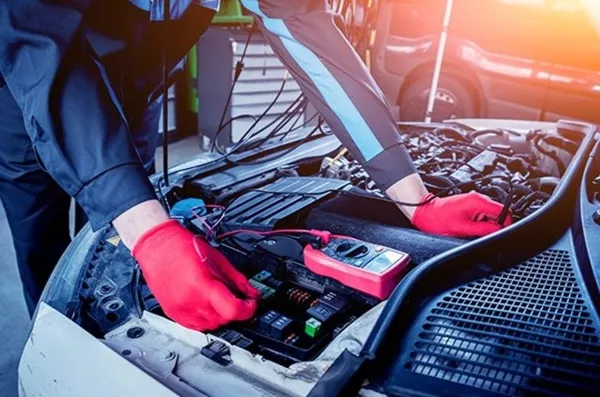
Car batteries are responsible for starting up the car and keeping it running
Battery charging is to replace the electrical energy consumed during normal use, topping up the energy stored within the battery to fill up the energy will be used for the car. The total energy required for a proper recharge which is based on several factors, such as the temperature, recharge rate, and depth of discharge.
Ideally, 110-150% of the discharged ampere-hours (depending on the type of battery) must be back to the car's battery to achieve a full charge. Here are the steps on how to charge a car battery:
4 steps to charge a car battery
1. Safety first
Before you attempt to charge the battery using an external charger, it’s essential to know some important safety precautions:
- Turn off the charger before you attach, rock, or remove that terminal clamps.
- Keep the battery away from open flames and sparks.
- Keep vent camps in place.
- Make sure you're charging in a well-ventilated area.
- Strictly follow the instructions of the charger manufacturer to prevent overheating.
Hazardous explosive gases will be produced in the charging process, and these run the risk of being ignited by naked flames, static electricity and sparks. Also, wearing Personal Protection Equipment (PPE) including chemical resistant gloves, overalls, and safety glasses is strongly advised when conducting battery charging.
2. Select the correct charger
Lead-acid car batteries are charged in three stages, namely: constant current, constant voltage and floating charge. When selecting a charger for your car’s battery, pick one that provides the specified charging current and voltage appropriate to the battery type.
Other types such as absorbed glass mat, gel, and flooded battery also have different charging requirements that enable them to provide good service life and optimum performance.
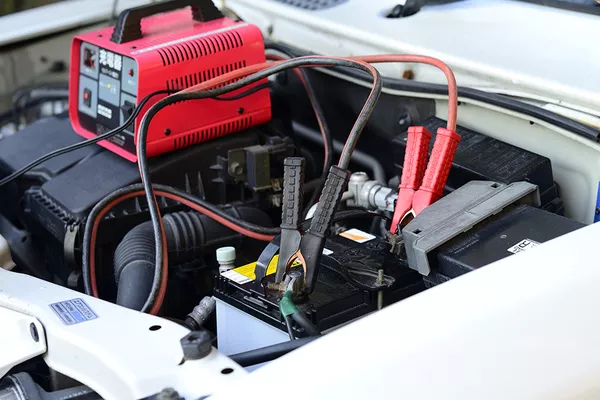
Pick a charger that provides the charging current and voltage appropriate to your battery type
3. Charging voltage
It’s extremely important to monitor the battery voltage when charging; this will minimize the risk of overcharging and also enable you to constantly check the battery’s progress when recharging. Failure to do so can permanently damage the battery.
Also, take note of the recommended charging temperature, usually set at 25 degrees Celsius. If it reaches or exceeds 50 degrees Celsius, the charging should be paused. Additionally, you also need to choose the right charging current or amperage for the size of the battery; this is crucial in extending performance and service life.
>>> Related: Car battery in the Philippines: How long it lasts, what are the different types, and what to buy
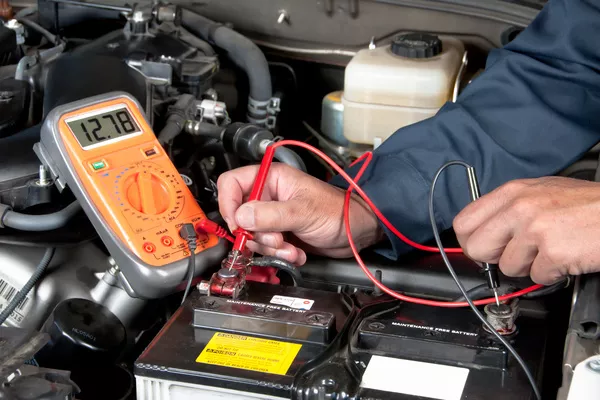
It’s extremely important to monitor the battery voltage when charging
4. Charging current
The advised safe charging current is 10 percent of the 20-Ampere hour (Ah) battery rating. This means that if you’re charging a 100Ah battery, 10 Amperes is recommended for charging current.
Remember that the most effective way to recharge a battery consists of lead-acid is by slow charging. Fast charging by raising the suggested amperes unduly stresses out the battery and shortens its service life.
>>> Related: Disconnecting a car battery: The Whys and Hows
Maintaining your car battery
Every car owner should know how to properly maintain their car’s battery, to ensure that it lasts for as long as it can. Below are tips on how to help you out:
Step 1.
If you’re using a serviceable wet-cell battery, be sure to check the water level inside every two to three months (if you’re using an absorbed glass mat battery, do not attempt to open the battery).
Water levels should be at the bottom of the refill hole. Only use distilled water when refilling the fluids. Avoid overfilling into the fill holes; refill only when the water level is low.

Check the battery’s water level every two to three months if it is a serviceable wet-cell battery
Step 2.
Clean the battery terminals of dried acid build-up using a wire brush every six to eight months. To do this, remove the connectors from the battery terminals. Mix baking soda and distilled water to make a paste. Rub the wire brush into the paste then scrub the battery terminals gently.
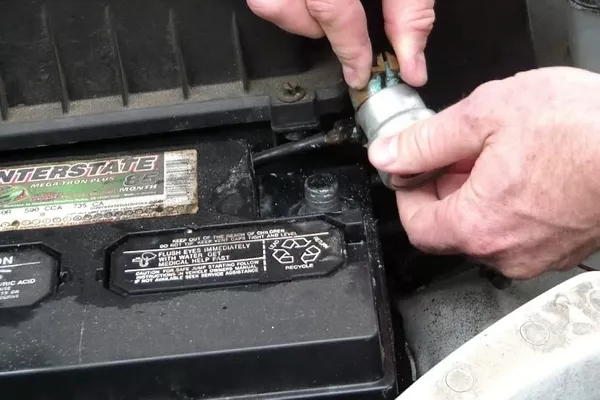
You need to disconnect the battery from the terminals
Step 3.
Apply high-temperature grease to protect the car battery from corrosion and rust.
>>> Related: Car battery drain overnight: 5 Possible causes and How to fix it
Step 4.
Every time you bring in the car for an oil change or general tune-up, you can use the opportunity to check the cell voltage as well. Mechanics usually have a voltmeter for this purpose.
Fully-charged batteries will carry 12.5 to 12.6 volts. You can also visit automotive battery shops to have the battery tested in-between checkups; many also provide battery charging services.
Note that batteries under 12.5 volts should not be tested until it has reached the fully charged level; otherwise, this will give a bad battery reading, even if the battery is in perfect shape.
>>> Read more:
- 7 factors that affect your car's battery life expectancy.
- Car battery charger Philippines: Why you should keep one and what to buy
Step 5.
Some vehicles have insulators that protect the battery from very high temperatures that can quickly dry out the fluid. If your vehicle has is equipped with one, check if it is in place and not damaged.
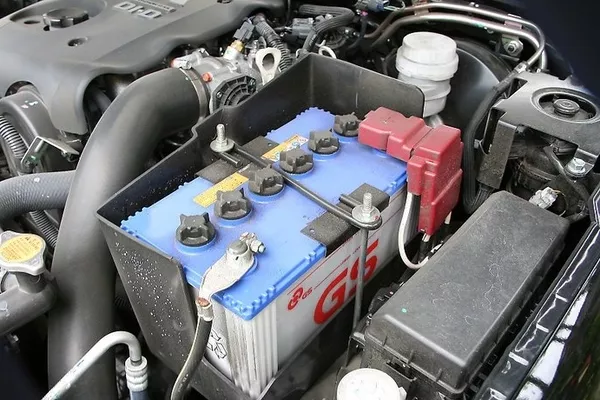
Inspect the battery insulator if your vehicle has one
>>> Related: Battery terminal: How to clean & Replacement cost
Step 6.
The best way to maintain the battery (and your car) is to go to a reputable auto shop or trusted mechanic for regular tune-ups and servicing. Every 5,000 kilometers or three months (whichever comes first) should suffice.
Extending your battery life also means ensuring that the rest of the car is running smoothly as well, and a regular maintenance regimen allows you to promptly address problems that may arise.
Recent posts
- 5 simple tips to care for your car battery Aug 16, 2022
- 6 steps to safely replace your car battery Jun 21, 2018
- Is it true that rarely driving means longer car battery life? Mar 30, 2018
- 7 tips to extend car battery’s life Oct 09, 2017
- What if the battery warning light is on? Oct 23, 2020












